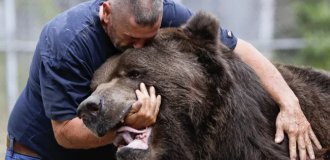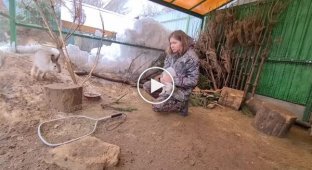White hare: why some predators prefer not to mess with it (9 photos)
The white hare is one of the most difficult hunting targets in the forest. Nature has strengthened the hare's character and taught him tricks and survival techniques. 
Many have heard the expression “hare soul”. This is what they say about a cowardly, timid nature, who is afraid of everything and almost runs to save herself. But this expression has little in common with reality. A fox, wolf or golden eagle needs to try hard to catch this “coward”.
I think each of us knows what this beast looks like since childhood. In summer - gray, in winter - white. Long ears, paws and a couple of kilos of dietary meat. But catching these couple of kilos of insight and cunning is quite a task. It’s easier to go hungry and not waste extra energy! 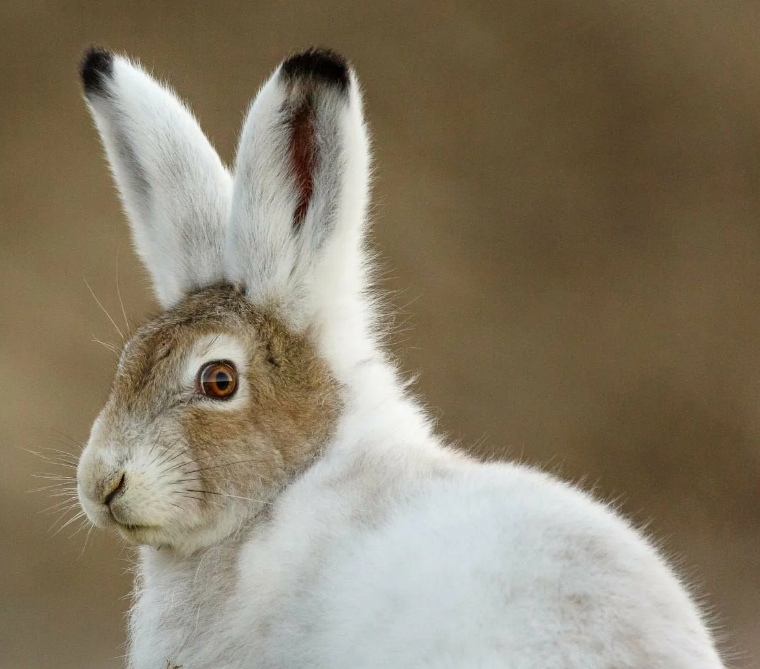
Hare, why did you put on the skin of another hare, huh?
Most animals prefer confrontation to escape. And the white hare is no exception. But he sparkles with his scythe heels not because he is afraid. But because running is his main weapon. The eared one easily accelerates to 40 km/h. Moreover, a hare can rush at such speed over almost any terrain without falling through, thanks to its wide paws. There are about 10 grams of weight per 1 cm² of sole. For comparison: the load per 1 cm² of a fox’s paw is about 40 g, and that of a wolf is 100 g. 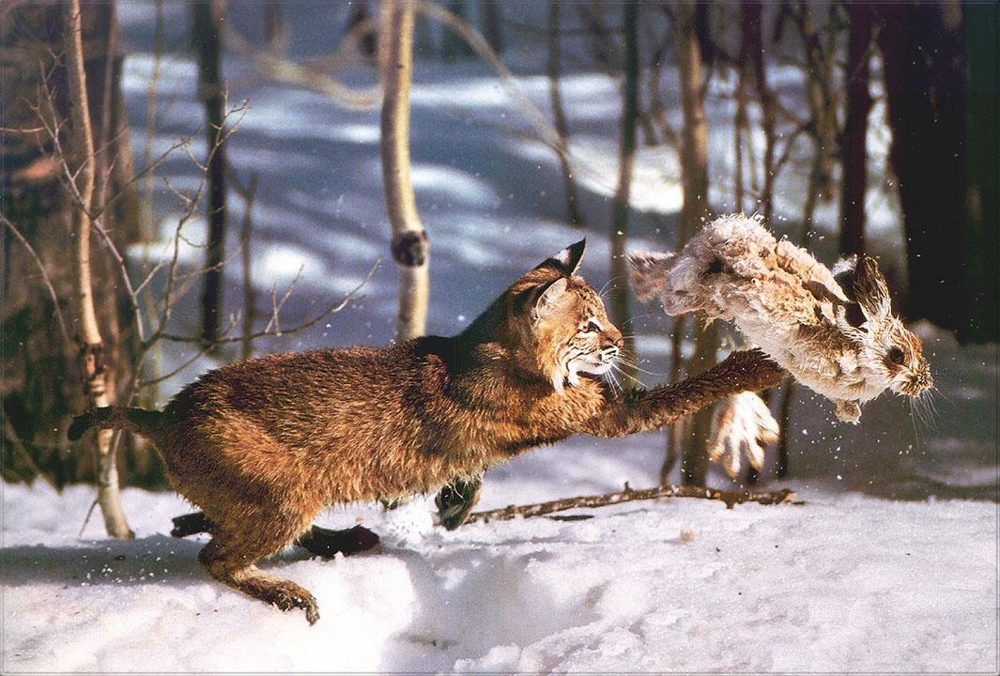
And once you get away, you won’t be able to find him! Hares are called oblique hares not because of a visual defect: the enterprising animal skillfully confuses its tracks. A couple of loops, a couple of false lunges, steps one after another - and lo and behold, search and whistle all over the forest! Even for skilled hunters, finding a hare’s bed in fresh snow is quite a challenge! 
Right here your eyes will diverge in different directions until you understand where the hare is going!
But you can see the true nature of a hare only by squeezing the hare into a corner. The beast will fall on its back, fold its paws and... no, it will not beg for mercy. And he will start kicking and kicking furiously! The hind limbs of a hare are a formidable weapon. No less powerful claws grow on powerful paws. If you hit them in the face properly, anyone will lose their appetite! 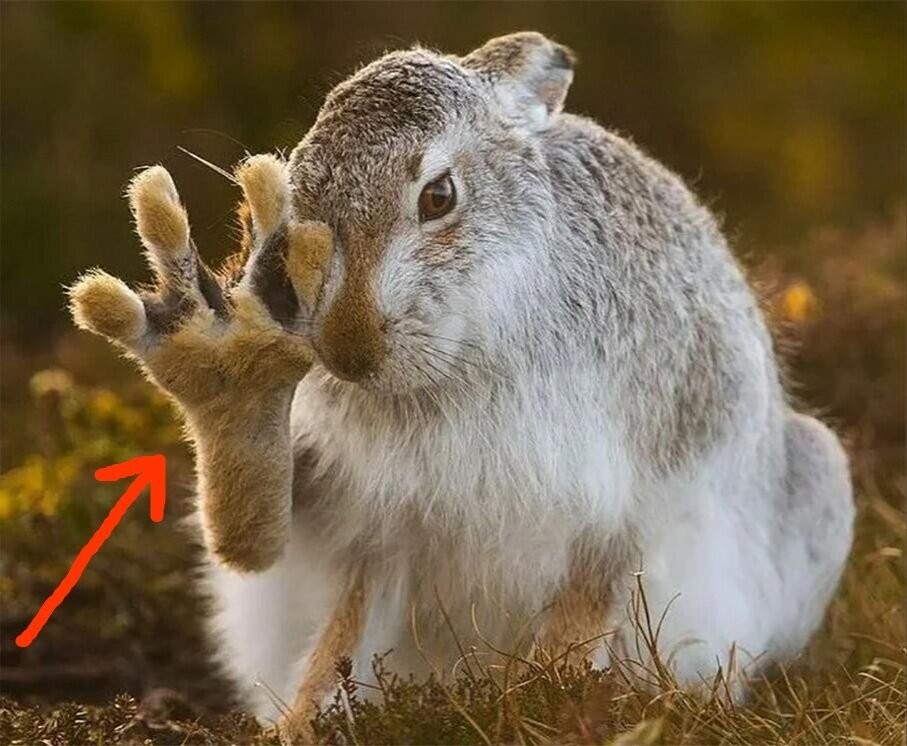
Hey, you. Yes, yes, you, on the other side of the screen. Give me five!
And to prevent attacks, the hare can also prescribe preventative cradles. It happens that, seeing someone large and potentially dangerous, the scythe purposefully moves towards him in order to properly ram him with his front paws. On which, by the way, the claws are longer and sharper than on the hind ones. 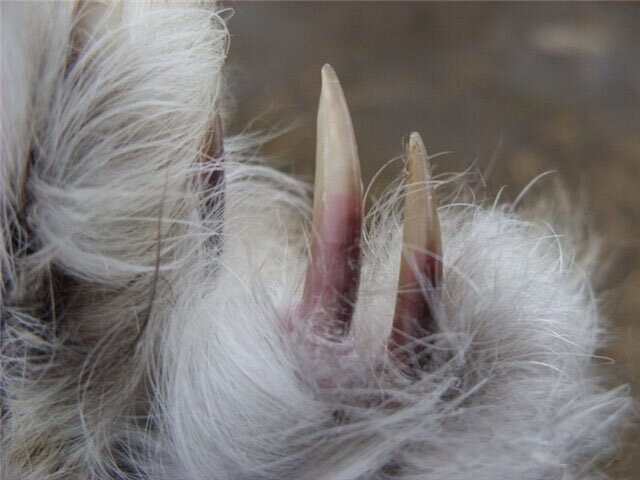
Even cats will envy such claws!
In peacetime, the long-eared fish digs up with them all the plant diversity that is available in the forest. Herbs, berries, roots, mushrooms - everything that fits into your mouth is useful. And in winter, when there is nothing to eat, the scythe sadly chews the bark from birches, larches, oaks, maples and rowan trees.
Hares are not just daredevils. They are brazen thieves! Long-eared animals regularly graze in summer cottages. They will gnaw on an apple tree, a cherry, or a plum. Even if you drive him away with a broom once, he will still come back. After all, they didn’t kill you last time? No! And what doesn't kill us makes us stronger! 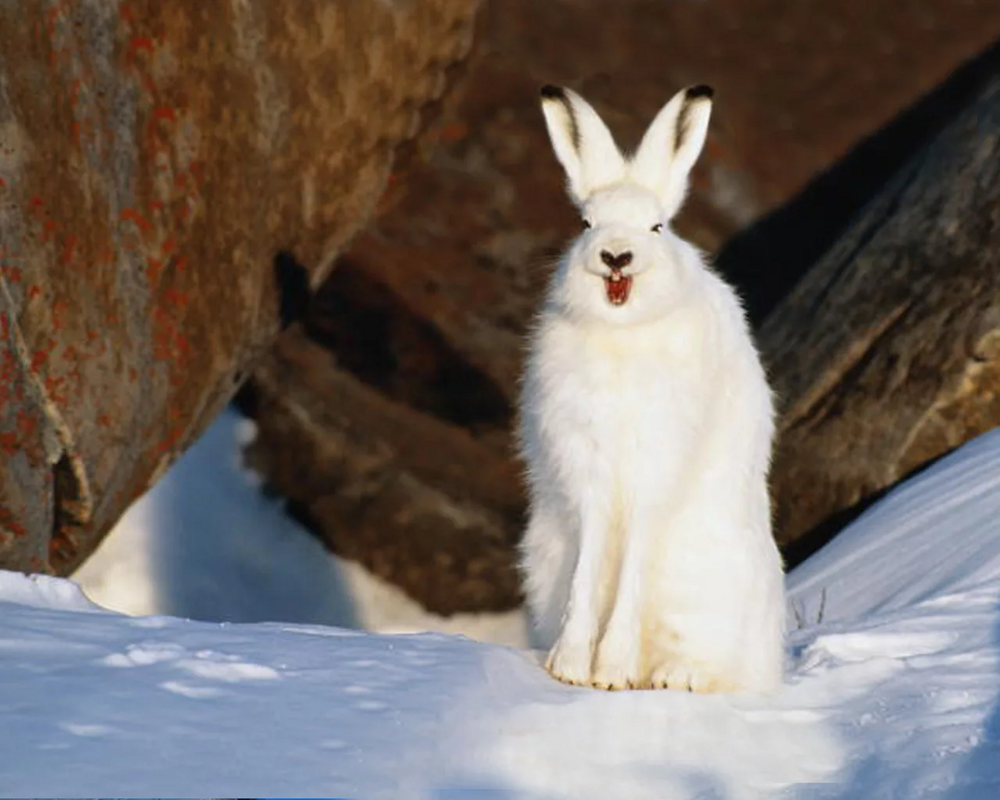
I left my grandmother, I left my grandfather, and I’ll leave you, gardener, even more so, mu-ha-ha!
What else to do but look for adventures in one place? The animal is predominantly nocturnal. Most of the day he lies in a secluded place, crushing the grass. In the warm season, by the way, the hare has to take extra time to feed in the morning, because the daylight hours are too long. Land controlled by one long-eared animal can range from 3 to 30 hectares! Try to get around them alone in a short night. 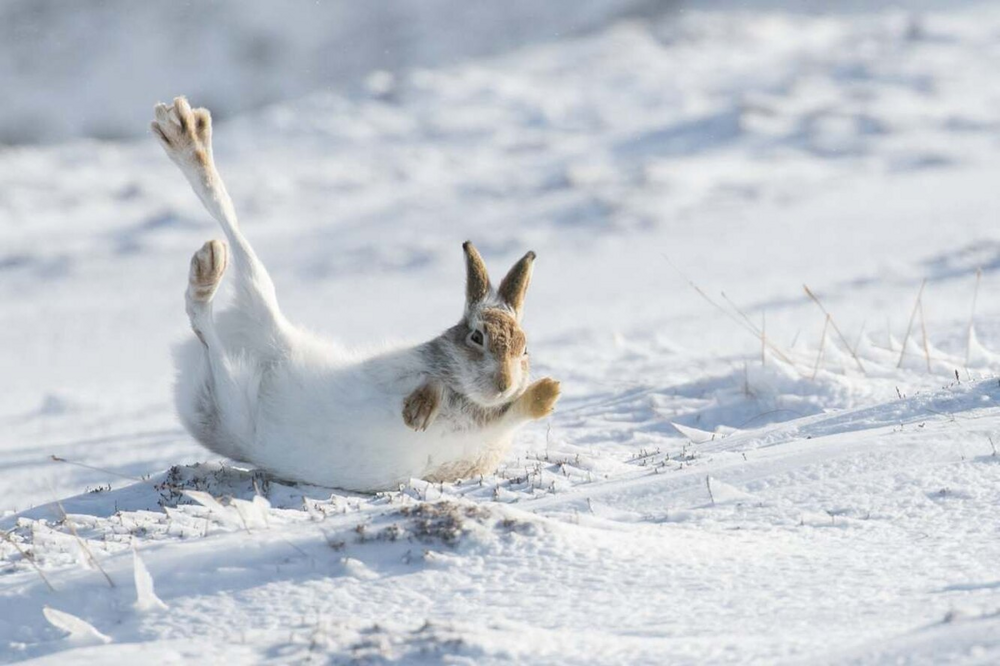
When you feel like you slipped and are about to fall, but you try to make it at least epic.
Even bunnies are not a reason to stay in one place. While the female walks around her territory and nibbles grass, the children humbly wait for their mother somewhere under a bush. Maternal love is, in principle, not held in high esteem by obliques: a litter of 6-11 bunnies is released for free bread at the age of two weeks! 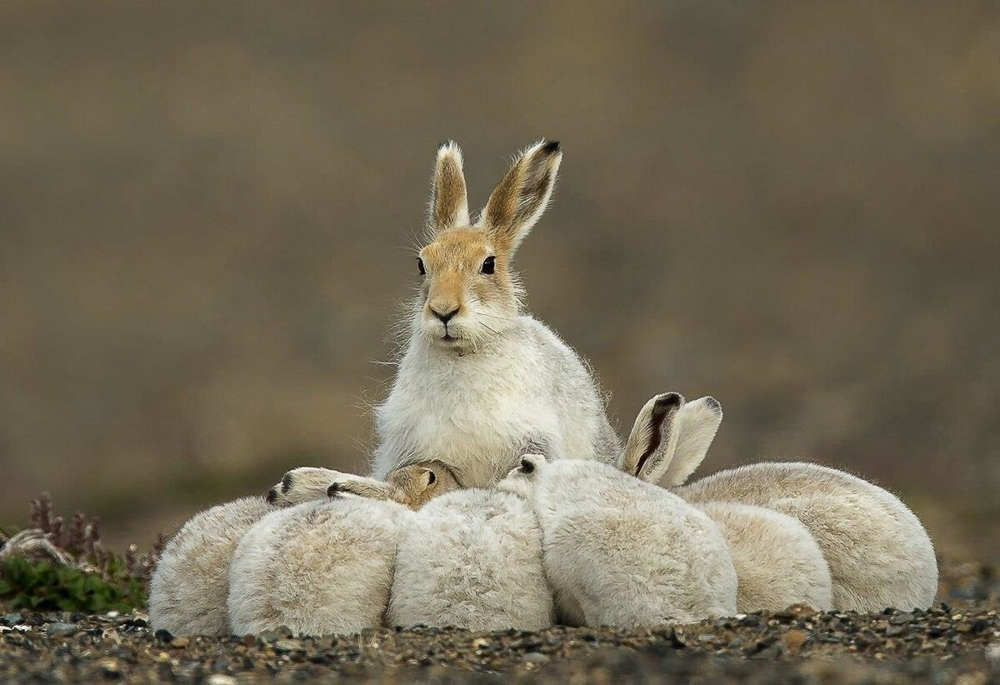
In one season, a hare can give birth up to three times. It all dependst depends on the region and the state of the food supply.
And although the white hare can live up to 17 years according to the body’s resources, most of them end their brave journey at 5. While a cunning animal can still escape from predators, it will not be possible to hide and escape from diseases and parasites.









